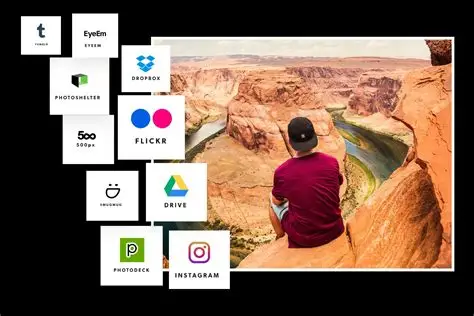
A customer goes shopping at an online shop and is attracted by bright customer images. There is trust exhibited through these images as they depict actual people using the products. The usage of customer photos within websites enhances interaction and clicks. This ecommerce goes without saying in 2025. It generates credibility and society. This paper discusses six of the best practices, and Yotpo is in the forefront.
Customer photos are not simply photographs, but social proofs. With 85% of shoppers trusting user-generated content, photos drive traffic and sales. Their non-utilization may lead to the loss of credibility. Integrate photos with Yotpo UGC makes the sites look more attractive. Now it is time to explore how we can take advantage of this trend.
What Are Photo Integrations with Customers?
User submissions of photos are integrated on the websites using Customer photo integrations. These are pictures that may be taken during reviews or over social media and emphasize the actual use of products. They boost trust and involvement. The integration is guaranteed as the platform Yotpo automates the collection of photos.
In the absence of photo integrations, websites are not authentic. Generic images fail to connect with shoppers, reducing conversions by 20%. Customer photos boost engagement by 30%. Yotpo tools enable easy photo management allowing no lost opportunities to make ecommerce successful.
6 Best Ways to Integrate Customer Photos into Your Website:
 1. Integrate Photos with Yotpo UGC
1. Integrate Photos with Yotpo UGC
Yotpo with cross-functional user-generated content (UGC) tool has a top-notch feature of photo integration. It gathers the photos of the customers through ecommerce integration. The images are presented by merchants with widgets that can be customized. Images are at display on the product pages, enhancing credibility. The analytics used by Yotpo measures engagement.
Technically, Yotpo syncs photo submissions employing APIs. Webhooks are upload requests that follow purchases. Photo galleries are embedded on web sites through JavaScript programming. Image authenticity is checked via the server-side scripts. Analytics APIs evaluate click-throughs. Counterfeit uploads are combated by way of fraud detection.
Photo performance is displayed through dashboards. A/B testing provides the best location of the gallery such as carousel styles. Yotpo’s photos increase conversions by 25%. Its free package is applicable to small stores. Premium options are scaled to enterprises so photos can integrate easily.
2. Create a Loyal Photo Community
The creation of a photo-sharing community re-engages the customers. Rewards are offered based on photos sent by the shoppers, creating loyalty. User content is displayed in the community galleries and this promotes trust. Photos are collected and displayed automatically on platforms.
In technical terms, APIs stimulate the submission of photos. Webhooks track uploads, granting loyalty points. Community galleries are embedded on sites using JavaScript widgets. Low quality images are sifted with the help of machine learning. API analytics record engagement rates. Fraud detection promises genuine filings.
Community participation is tracked using dashboards. A/B testing optimizes reward systems, such as a point system. Photo communities boost engagement by 20%. They foster repeat customers, recursive trust in genuine customer inputs.
3. Product Page Photos
Photo integrations on the product page increase confidence. There are the customer pictures with the products that demonstrate real usage. This increases confidence of purchase. Photos can be incorporated together with ecommerce systems through platforms.
In a technical aspect, APIs are used to retrieve customer photos on databases. JavaScript widgets add pictures into product pages. Photo uploads utilize Webhooks after purchase. View to conversion rates is tracked by Analytics APIs. Secure APIs remove the potential of tampering of data. Verification Confirmation of image authenticity results in fraud detection.
There are photo engagement indicators represented in dashboards. A/B testing optimises image location, e.g. thumbnail grids. Product page photos lift conversions by 22%. They give social proof, and products are more attractive and credible.
Clean visuals also play a major role. Tools like Freepik Background Remover allow ecommerce teams to standardize product images before uploading them. These tools remove distractions, match brand aesthetics, and improve focus on the item itself. Better image quality also improves A/B testing results by eliminating visual distractions that could affect user attention.
4. Post Photos on Social Networks

Technically, APIs share photos on social sites. Webhooks monitor shares and clicks. Photo carousels on feeds are embedded through JavaScript widgets. CDNs guarantee quick loading of images. The effectiveness of traffic is gauged by Analytics APIs. A true share is verified in a manner of fraud detection.
Social engagement metrics are watched by dashboards. A/B testing optimizes post timing, such as evening shares. Social photo sharing boosts traffic by 18%. It intensifies the visibility in the form of attracting customers by using credible visuals.
5. Use Photos Email Campaigns
Customer Photo Clicks in email campaigns increase. Photos emphasize authentic product applications to drive clicks. Conversions occur when there are image-based personalized emails. Photo integration is made efficient by the platforms.
Technically, photo embedded emails are presented with the help of SMTP servers. APIs retrieve pictures in the cloud. Webhooks send emails after buying. Analytics APIs look at click-through rates. Data is secured through secure APIs. Detection of fraud makes sure of real pictures.
Email performance is displayed on dashboards. Photo placement such as header images is optimised through A/B testing. Photo emails increase clicks by 20%. They create trust, which invites customers to come home and shop.
6. The Blog Content of Feature Photos
The use of images can be highly effective when the photos of customers are included in the blog as in this way, storytelling is considerably boosted and becomes more realistic and closer to the reader. The resulting user-generated images create strong visual proof of benefit in the real world and useful application of the product, which is tremendously compelling to the audience more than just words could relay.
With the real face of customers, blogs are more dynamic and user friendly thus generating more organic traffic and greater brand credibility. User-generated content platforms make the sharing of these important photos very user-friendly because they integrate directly with other content management systems (CMS).
Additionally, we have also established strong fraud detection measures to ensure that all images that will be featured are genuine and are actually uploaded by the customers ensuring content integrity. Dashboards offer a holistic picture of exploring the performance data of the blogs such as page views and engagement rates.
More decisions can be made using A/B testing; an example could be to test which photos to place on a page more often to have an impact (use of inline images versus use of a hero shot). Ultimately, the inclusion of authentic customer photos in blog content is proven to boost traffic by an impressive 15%, creating compelling and trustworthy narratives that attract and convert customers through powerful visual storytelling.
Conclusion
Photo integration with customers is important in 2025 websites. They establish credibility and interest. The UGC platform of Yotpo is driven by streamlined automation. Photo management is guaranteed with the help of APIs and webhooks. These are tactics that propel ecommerce.
Retailers should implement the concept of photo integrations critically. Yotpo is the master of collecting and showing. There are other facilities such as emails and blogs that reinforce this. Begin getting customer photos to enhance the credibility and conversions of web sites.
FAQs
What is the reason behind customer photography?
The power of customer photos in the process of true trust establishment with prospective buyers is gigantic, since it provides natural, familiar images of goods in the real sense of the word. It is a user generated content that contributes greatly to the increase of engagement as it lets the customer see the products in the customers eye and not only that professional studio shot. Such genuineness translates directly to increased conversion rates, because the shoppers are more self-assured in their buying choices, with the confirmation of valid social evidence.
Do photo integrations present complicated issues?
Incorporation of customer photo solutions is not meant to be complicated. Newer platforms make use of well-established APIs that streamline the process such that anyone can integrate the new platform with an existing e-commerce site without having to be an expert at the fundamentals of coding. The ease of use granted by intuitive dashboards offers the benefit of a centralized user interface in which all facets of customer photo collection, moderation, and display can be managed, efficiently and with relative ease, regardless of the technical capability of stores.
What is the prevention of photo fraud?
Fraud prevention in customer submitted photos is a layered procedure. Machine learning algorithms stay active and constantly scan uploaded pictures raising any alarm of suspicious or forged pictures, including stock photography or doctored content. Also, the IP tracking can make sure the sources of the submissions are authentic and the photos belong to users who made them. These tweaks help protect the integrity of your visual materials and preserve credibility in your audience.
What is the effect of photos on conversion?
Customer photos have a significant positive impact on conversion rates, often increasing them by 20% or more. Real customer images also present trust in shopping immensely since real customers see the rest of the world in these images as more believable and experience with them than it is with the classic product photography. This visual form of social proof builds trust into the purchase, inducing the confidence in the visitors to proceed with the buying decisions.


 1. Integrate Photos with Yotpo UGC
1. Integrate Photos with Yotpo UGC



